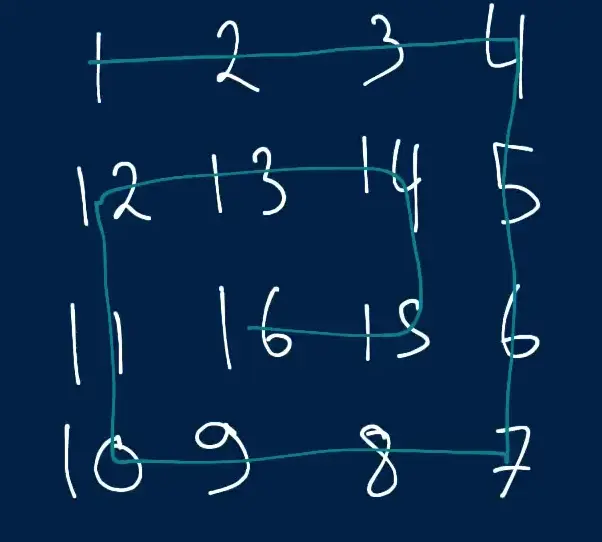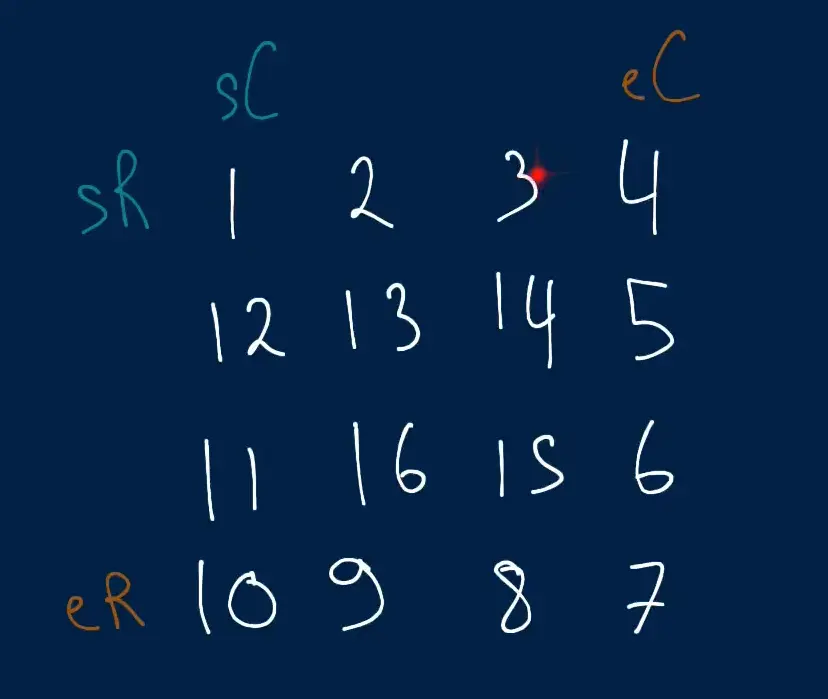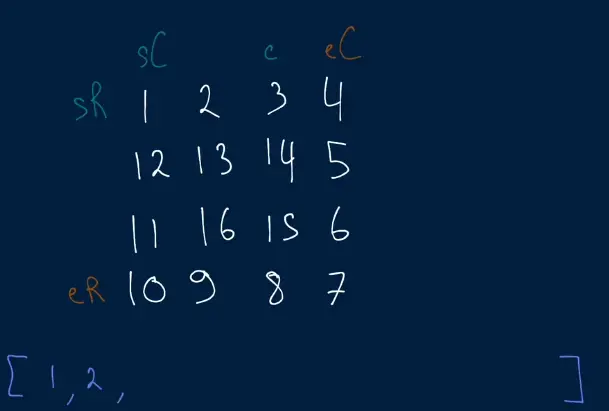Date: 2024-07-27
Problem

- In this problem our objective is to take in a two dimensional array and traverse it in a spiral manner and return a one-dimensional array of all the array’s element in spiral order.
- This problem is popular in coding interview because it test how well a candidate can transcribe simple login into code.
- This problem can be solved recursively or iteratively.

- We can essentially traverse through the outer perimeter of the 2d array and traverse through the inner perimeter.
Solution
- To solve this we can create some variables to indicate the sR (starting row) eR (ending row) and sC (starting column) and eC (ending column).


- We start at the starting row and begin traversing and adding to the final array. Starting off at 1 we can move on to the next value which is 2. moving the index as we go.
- Essentially in this solution we are using pointers and a starting and ending for columns and rows. Once we’ve iterated over the outer perimeter then we move the dimension inwards by one.
- Once sR has crossed eR and sC has crossed eC then we know that we don’t need to iterate anymore.
- Time Complexity: , we are traversing the entire array. Space Complexity: , since we are storing n values in a new array.
def spiralTraverse(array):
# Declare result array
result = []
# Start row, end row, start col, end col
startRow, endRow = 0, len(array) - 1
startCol, endCol = 0, len(array[0]) - 1
# <= and `and` is key for when one of the dimensions overlap, as well as the chance that you have
# a one dimensional inner perimenter
while startRow <= endRow and startCol <= endCol:
for col in range(startCol, endCol + 1):
result.append(array[startRow][col])
for row in range(startRow + 1, endRow + 1):
result.append(array[row][endCol])
for col in reversed(range(startCol, endCol)):
# This if statement is needed to account for the edge case
# when there's a single row in the middle of a matrix. We don't
# want to double count values in this row, which we've already counted
# in the first for loop above. See test case 8.
if startRow == endRow:
break
result.append(array[endRow][col])
for row in reversed(range(startRow + 1, endRow)):
# Edge case when there's a single column in the middle of the matrix.
# In this case we don't want to double count the values in this column.
# See test case 9
if startCol == endCol:
break
result.append(array[row][startCol])
# Shift the perimeter
startRow += 1
endRow -= 1
startCol += 1
endCol -= 1
return result